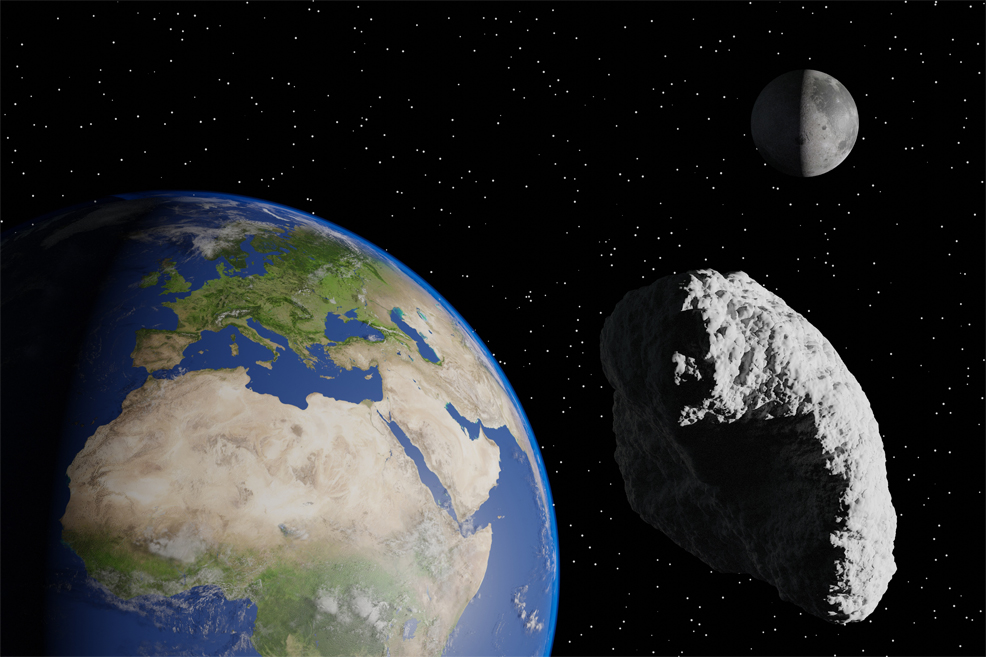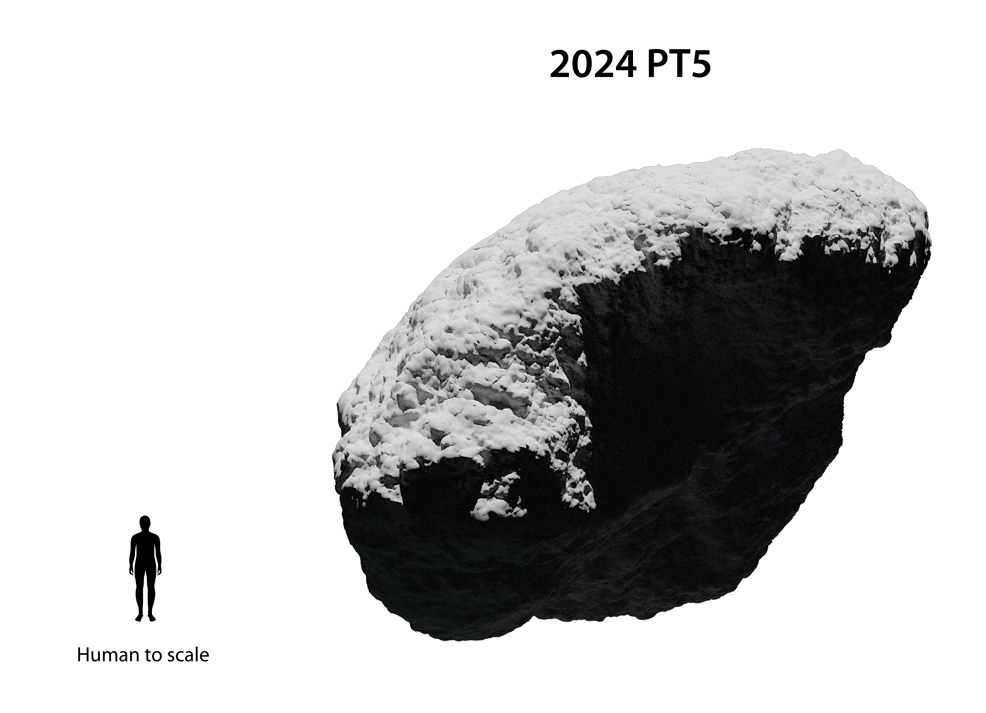
20th September 2024 Earth to get temporary "mini-moon" A newly discovered object will temporarily become our second moon, as it orbits the Earth from 29th September until 25th November. It will return in the year 2055.
Thousands of near-Earth objects (NEOs) pass by our planet every year, most appearing in cislunar space for only a few hours or days. These celestial visitors are typically on a fleeting trajectory, influenced only briefly by Earth's gravitational pull before continuing on their way. However, a newly discovered object, 2024 PT5, is set to do something far more unusual. Rather than speeding past, it will be captured by Earth's gravity and enter a temporary orbit, lasting nearly two months. Discovered on 7th August 2024 by the Asteroid Terrestrial-impact Last Alert System (ATLAS) in South Africa, 2024 PT5 will follow a "horseshoe" path, a type of orbit where a body alternates between trailing and leading Earth. This rare orbital configuration allows Earth's gravity to occasionally capture such objects. In the case of 2024 PT5, this alignment will result in the small object briefly becoming a second moon before escaping back into space. A rare "mini-moon" like this can occur when an object moves at relatively slow speeds for an asteroid – often 2,200 mph (3,540 km/h) or less – allowing Earth's gravity to influence its trajectory more strongly. 2024 PT5 is believed to originate from the Arjuna belt, a group of small, Earth-crossing asteroids with orbits similar to our planet's.
While measuring just 10 metres across, 2024 PT5 is larger than 2020 CD3 and 2006 RH120, two previously observed mini-moons. Despite this, it will be too small and dim to be visible through amateur telescopes or binoculars. A larger telescope with a diameter of at least 30 inches plus a CCD or CMOS detector will be needed to observe it. Finally, while some objects temporarily captured by Earth have turned out to be artificial space debris, 2024 PT5 is almost certainly a natural object, as indicated by its orbital dynamics and characteristics. After escaping Earth's gravity in late November, it is expected to return in the year 2055. A paper on the discovery appears this month in Research Notes of the American Astronomical Society (RNAAS).
Comments »
If you enjoyed this article, please consider sharing it:
|
||||||








